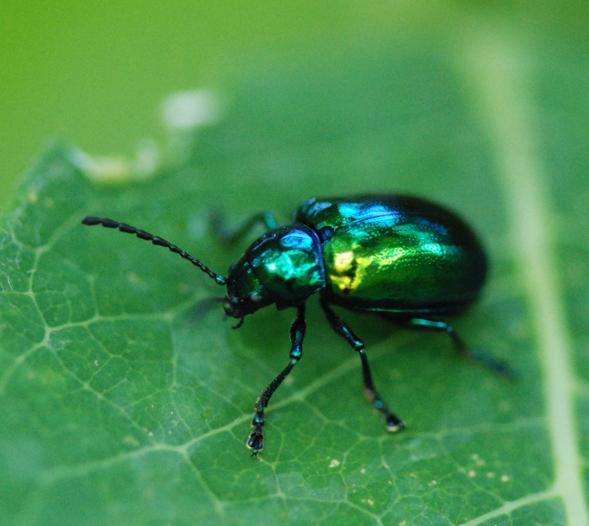Green brilliant beetles are ubiquitous throughout the Eurasian continent, except for mountains and deserts. Most of these insects live in Africa. They are called Golden Bronzovka or Ordinary Bronzovka . Often
meet in groups. They feed on plant sap, overripe fruits and berries, flowers, and not only wild, but also cultivated plants, for example fruit trees, which cause some damage to agriculture. But this harm is insignificant, since their massive invasions begin at a time when fruit plants are already fading. These insects belong to the genus
Cetonia (the name is translated from the ancient Greek language as "metal beetle"). Scientists distinguish five subspecies of
Bronzozov golden and a myriad of aberrations. These green shiny beetles differ from each other in shape, shades of color, the presence of hairs and habitat.
Adult individuals - adults - have a body length of 13 to 22 millimeters. Sexual dimorphism is expressed only by the difference in the sizes of males and females. Females are smaller. The head is medium-sized, elongated forward and slightly tilted down.

A distinctive feature is the presence of a vent in the sides of the elytra, through which wings are released for flight. The body is wide, oblong, in some insects it narrows from the head. The green brilliant beetle leads a daily life. Particularly active bronze in hot dry weather. On cloudy days, insects sit still on flowers and do not even try to take off. At low air temperatures, as at night, bronzovka descend closer to the ground: they hide at the roots of plants, in rosettes of leaves. Green brilliant beetles begin years in late May - early June and last for up to 3.5 months. Females lay eggs in soft rotting wood, compost, anthills, forest litter or manure. Larvae are large, thick, molting twice. There are no claws on the legs, they move on the back. Glues the cocoon, where it will turn into a chrysalis, from any soft material with the help of the secret that stands out in the back of the body. The transformation of an egg into an imago is long - from 2 to 3 years.
Green glittering
bronze beetles are included in the diet of the following birds: rooks, magpies, ivologians, rolls, jays and shrikes. Winemakers consider these
insects to be pests and mercilessly remove them. Due to the hidden life of the larvae and the high mobility of adult insects, it is extremely difficult to fight them. The most effective way is to regularly get rid of old wood on the site. You can collect bronzes using light traps. But poisoning flowers of plants is not recommended, because not only future fruits are killed, but also beneficial insects - bees and bumblebees. However, the number of bronzes is not reduced. This brilliant beetle is able to live in captivity. Interest for fans is not only imago, but also larvae. More often, the southern subspecies of bronze are chosen as the object of observation, since they do not go into diapause in winter - their life lasts all year round.